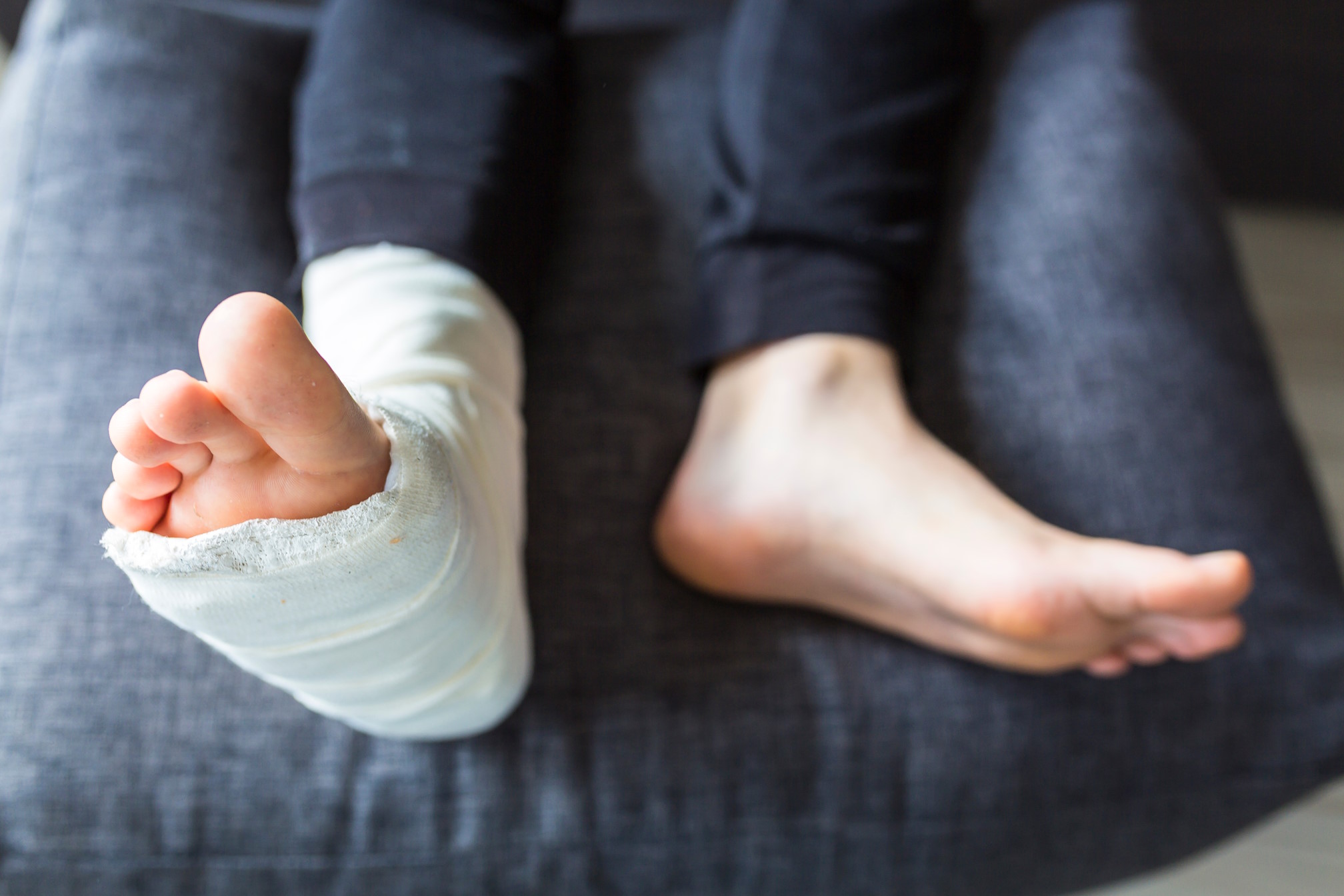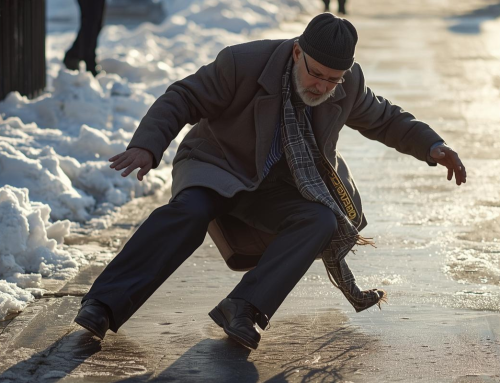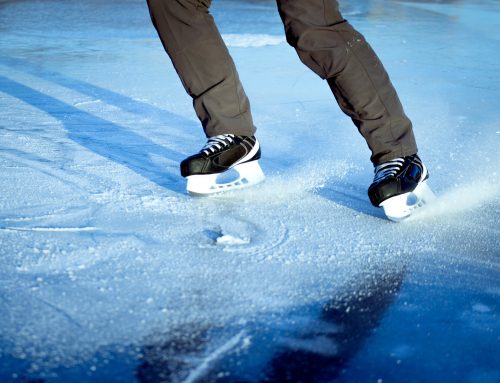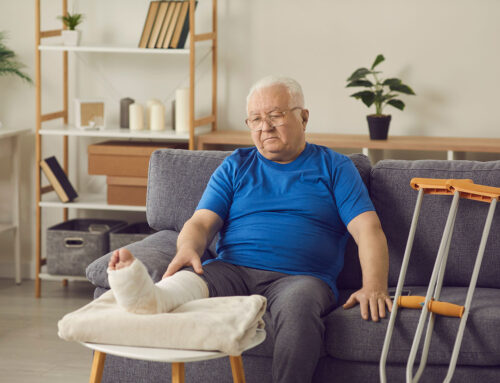Trying to get comfortable at night with a fractured ankle? Between the throbbing pain, awkward positioning, and limited mobility from a boot or cast, sleeping with a broken ankle can feel like an impossible task. But rest is more than just a comfort. It’s essential to your recovery.
Better sleep means better healing. In this guide, you’ll learn how to sleep with a fractured ankle more comfortably, including the best sleeping positions for ankle fractures, how to elevate your ankle at night, and simple, effective tips to avoid common nighttime mistakes that could slow your progress.

Why Sleep Matters During Ankle Fracture Recovery
Restful sleep isn’t just nice to have. It’s a key part of the healing process. While you sleep, your body works to repair tissue, reduce inflammation, and regenerate bone cells. For anyone recovering from an ankle fracture, poor sleep can intensify pain, slow healing, and leave you feeling drained during the day.
That’s why learning how to sleep with a fractured ankle comfortably is more than a matter of convenience; it’s a recovery priority.
How to Sleep Comfortably with a Broken Ankle: Where to Start
If sleeping with a broken ankle is keeping you up at night, begin by setting the stage for deeper, more restorative rest.
Here are three foundational tips to support your sleep setup:
1️⃣ Optimize Room Comfort
A cool, quiet, and dark space helps regulate your sleep cycle and reduce nighttime disruptions.
2️⃣ Establish a Routine
Try to go to bed and wake up at the same time each day, even during recovery. A consistent rhythm helps your body relax more easily at night.
3️⃣ Manage Pain Strategically
If prescribed, take pain medication 30–60 minutes before bedtime to minimize discomfort and avoid waking from throbbing or pressure.
Best Sleeping Positions for an Ankle Fracture
When it comes to sleeping with a broken ankle, positioning makes a big difference. The right sleep posture can help reduce swelling, ease pain, and promote faster healing, while the wrong one can lead to restless nights and slower recovery.
The best sleeping positions for ankle fracture recovery are:
🛏️ Sleeping on Your Back (Recommended)
Back sleeping is ideal because it allows for safe, stable elevation of your injured ankle.
- Use firm pillows or a wedge cushion to prop your leg up so your ankle is slightly above heart level. This helps minimize swelling.
- Ensure your leg is fully supported from knee to heel to prevent awkward bending or shifting during the night.
Why it works: Elevation helps reduce inflammation, which can lessen nighttime pain and stiffness.
🛏️ Side Sleeping (If Back Sleeping Isn’t Comfortable)
Not everyone can fall asleep on their back. If you’re more comfortable on your side:
- Lie on your uninjured side for stability and comfort.
- Place a pillow between your knees to keep your hips aligned.
- Add another pillow or cushion under your injured leg to keep your ankle gently elevated and supported.
Why it works: This position protects your ankle while reducing pressure on other joints.
⚠️ Avoid Stomach Sleeping
Sleeping on your stomach may seem harmless, but it often forces your foot into an unnatural position, placing twisting strain on the ankle joint.
Why to avoid it: This can increase discomfort, delay healing, and cause stiffness or swelling overnight.
Elevating Your Ankle at Night: A Key Step in Healing
Elevating your ankle at night is one of the simplest and most effective ways to reduce swelling and support healing. After an ankle fracture, fluid tends to pool in the lower leg due to gravity, especially when you’ve been upright during the day. Elevation helps counteract this and promotes better circulation while you sleep.
How to elevate your ankle properly and comfortably overnight:
Use Firm, Supportive Elevation Tools
-
- Stack two to three firm pillows or use a wedge-shaped foam cushion designed for leg elevation.
- The goal is to raise your ankle slightly above heart level while still feeling stable and supported.
Prioritize Comfort and Stability
-
- Make sure the elevation feels natural—not forced.
- Avoid setups that bend your knee awkwardly or create pressure points.
- If your leg feels tingly or numb, adjust the angle or padding.
Maintain the Elevated Position
-
- Try to keep your ankle elevated consistently through the night.
- If you move a lot in your sleep, consider placing a bolster or pillow on either side of your leg to help hold it in place.
Elevation is great for comfort, and it actively reduces inflammation, which can help shorten your recovery time.
Sleep Comfort Extras for Ankle Recovery
These simple additions can make a big difference in how well you rest:
- Firm or wedge pillows for elevation and joint support
- Blankets to manage chill in the injured limb
- Ice packs or heating pads (with doctor approval) for pain relief
- Nightstand essentials: water, medications, remote, or phone within easy reach
Small details can go a long way when you're trying to rest with a broken ankle.
Common Mistakes to Avoid When Sleeping with a Broken Ankle
Even small missteps can make sleeping with a broken ankle more uncomfortable or slow down your recovery.
Common nighttime mistakes to watch out for:
❌ Skipping Elevation
Not elevating your ankle can cause fluid buildup overnight, increasing swelling and morning pain.
❌ Using the Wrong Pillows
Soft, sagging pillows may feel cozy at first, but they don’t offer the firm support your ankle needs to stay properly elevated and aligned.
❌ Removing Braces or Casts Too Soon
Unless your doctor tells you otherwise, keep any prescribed braces, splints, or walking boots on while you sleep. Removing them early can disrupt healing or cause re-injury.
❌ Sleeping in the Wrong Position
Avoid lying in ways that place pressure or awkward angles on your ankle—like curling your legs too tightly or twisting onto your stomach. Poor positioning at night can undo progress made during the day.
Sleep is when your body does its best healing, and these small habits help protect that process.
Ankle Fracture Recovery Sleep Tips to Support Healing
Beyond positioning and elevation, these additional tips can help you sleep more comfortably with a broken ankle and support your overall recovery:
🌙 Wind Down Your Body and Mind
Practices like deep breathing, meditation, or calming bedtime routines (like reading or soft music) can help reduce tension and make it easier to fall asleep, especially if pain or discomfort triggers anxiety at night.
💧 Stay Hydrated—Strategically
Drink plenty of water throughout the day to support circulation and tissue repair. But try to limit fluids in the last hour or two before bed to avoid unnecessary bathroom trips that disrupt your rest.
🦵 Do Gentle Movement (if approved)
If your doctor allows, try gentle ankle pumps or light stretches before bed. This can reduce stiffness, improve circulation, and make elevation more comfortable once you lie down.
These small adjustments can make a meaningful difference in both your comfort and recovery, especially during the hours your body does its deepest healing.
👉 Looking for safe ways to move?
Try these ankle fracture exercises approved for early-stage rehabilitation.
Using LIPUS Therapy as Part of Your Nighttime Routine
If you’re using Low-Intensity Pulsed Ultrasound (LIPUS) therapy, such as the portable Melmak device, bedtime is an ideal time to integrate this non-invasive treatment into your recovery plan.
LIPUS can help stimulate bone healing, reduce inflammation, and may ease discomfort that interferes with sleep.
Tips to make it part of your nightly routine:
→ Use LIPUS before bed to support healing overnight and reduce swelling that may build up during the day.
→ Keep your device charged and within reach, so it’s easy to use consistently each evening.
→ Make it a calming ritual: Pair your LIPUS session with other relaxing habits like listening to music or gentle stretching to wind down both body and mind.
FAQs About Sleeping with a Broken Ankle
Below are some of the most common questions we hear from patients struggling to rest comfortably while recovering from an ankle fracture:
Improve Sleep. Support Healing. Recover Smarter.
Sleeping with a broken ankle isn’t easy, but the right tools and positioning strategies can make a measurable difference. By elevating your ankle, using proper support, and creating a recovery-friendly routine, you’re giving your body what it needs to heal.
If you’re looking for ways to actively support bone healing, LIPUS therapy may be part of your solution. The Melmak device is a portable, non-invasive treatment option designed to accelerate fracture healing.
👉 Learn more about Melmak and see if it’s right for your recovery plan.
Looking for more recovery insights? Explore our latest articles.





